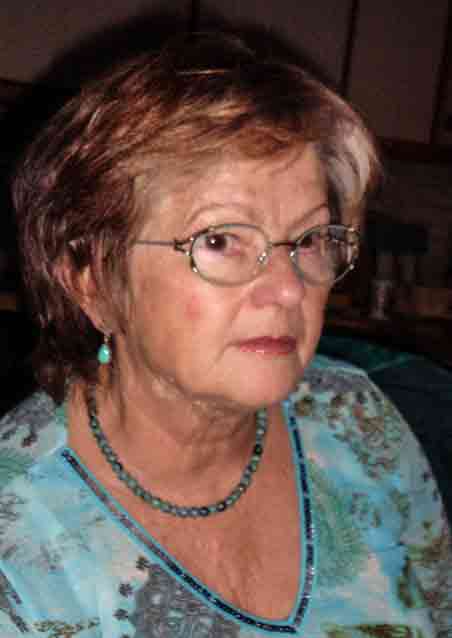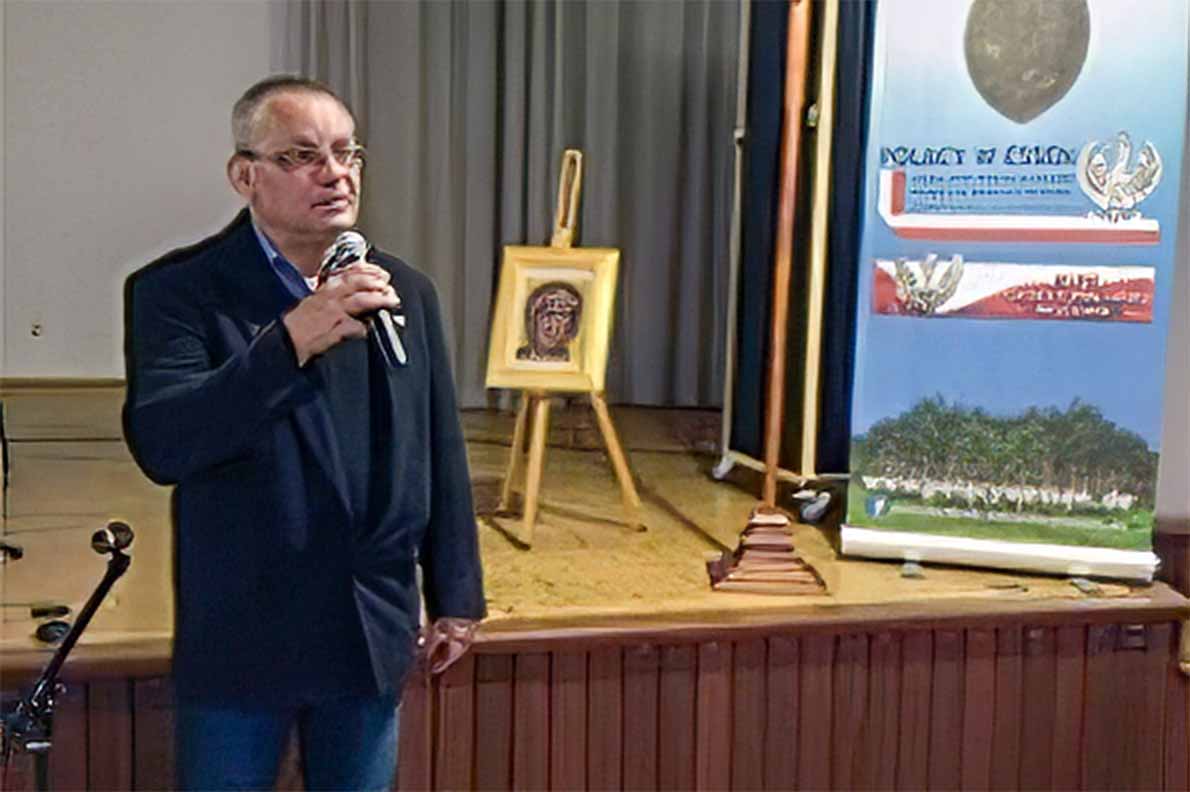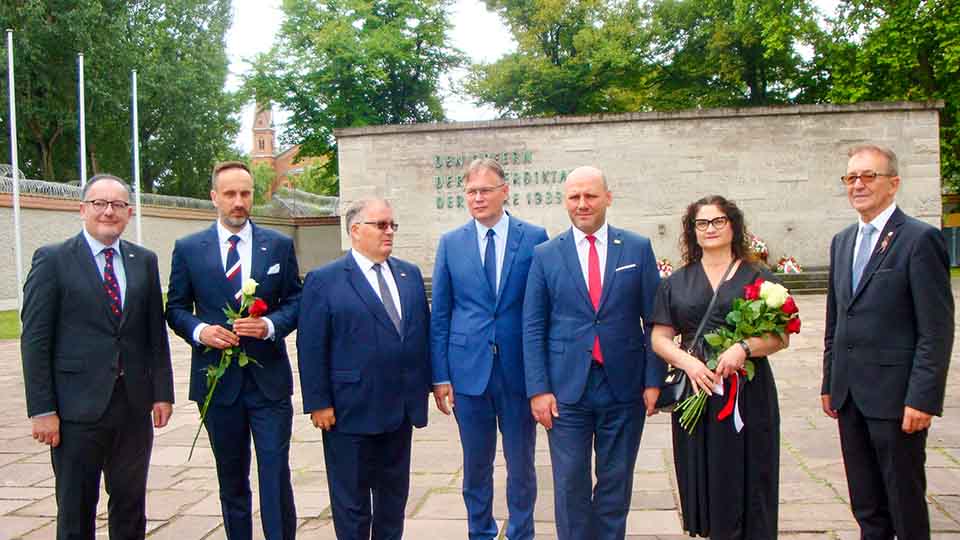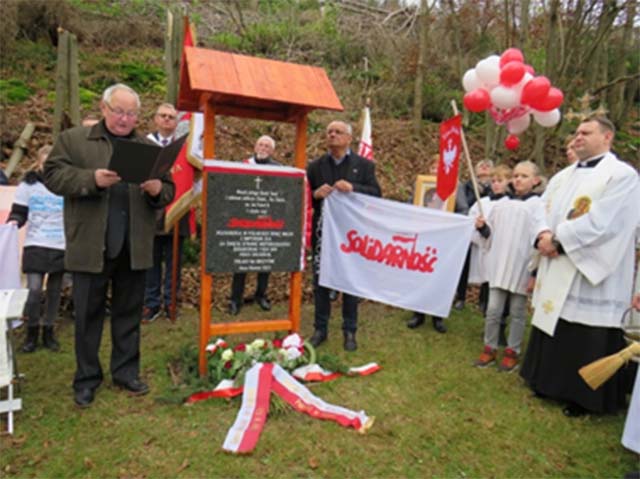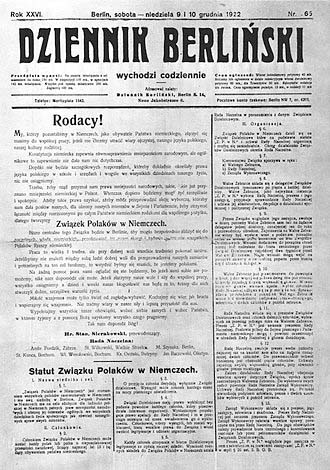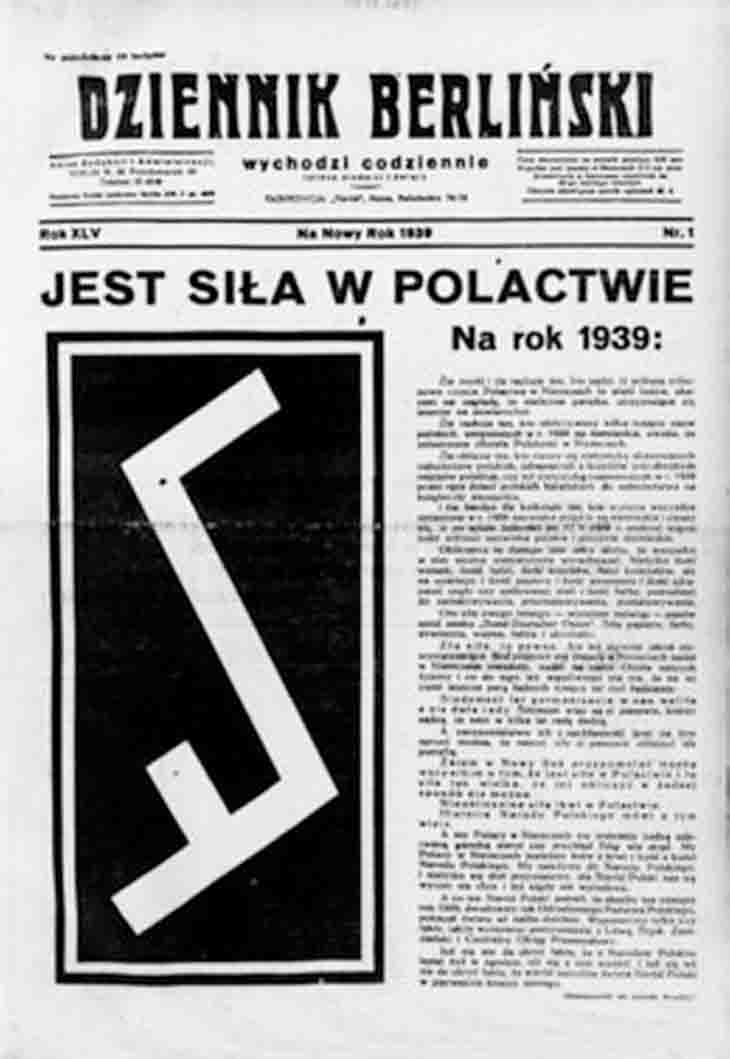The Polish-language media in Germany are already, as Germans call them — indicating their age of 131 years — "old". They were organized by political, military and economic emigrants, as well as the people who had chosen to settle outside Poland. They (the media) were an element and expression of identity and culture-creating activities of various Polish communities and emigrants. Their content were and are the phenomena that existed on the border of two cultures: Polish and German. Hence, we can talk about their dialogicality, as well as the development of multiculturalism.
The Beginnings
The beginnings of the presence of these media on German soil date back to the end of the 19th century, when Poles came to the Ruhr in search of work. In the second half of this century, in the territory of the Prussian partition, the Germans ruthlessly carried out the so-called "Prussian Deportations". They covered about 26 thousand people. In 1886, the Prussian parliament, at the request of the government, established the Colonization Commission with a fund of 100 million marks. The commission was to buy the land estates from Polish hands and parcel them up among German peasants. Rural households were also affected by this persecution. Peasants, as well as landowners, on the basis of the "Deportation Ordinance of March 26, 1885" were forced to leave their own farms. Many of them, in order to save themselves from hunger, went to the area of today's Ruhr in search of work.
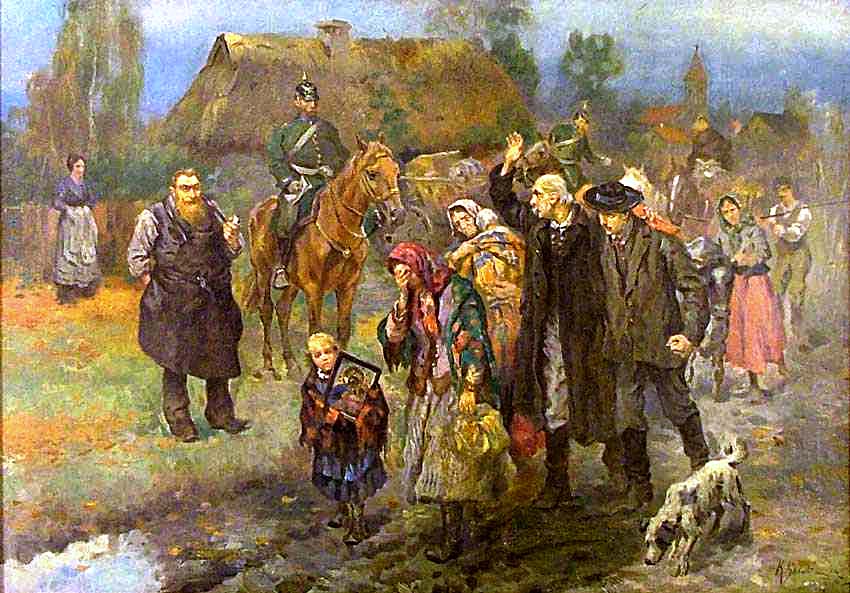
Prussian Deportations, Konstanty Górski, oil-on-canvas, 1915 (Source: Wikipedia)
A Polish emigrant at that time in Bochum wrote about them: "Our fathers, although they came from simple peasant families [...], always thought about the future, about those [, ...) who would come after them. They wanted [...] that the native intelligentsia should emerge from their ranks, so they would stick to organizational life." (1)
In the initial phase of organizing publications in Germany, clergy played an important role: Fr. Józef Szotowski, the founder of over 20 Catholic organizations in Germany, Franciszek Liss, who founded and edited the first Polish magazine "Wiarus Polski" in Bochum, and Michał Kwiatkowski, editor of the journal "Narodowiec" in Herne. In the early 1920s, these magazines moved to France.
The Union of Poles in Germany
With the establishment of the Union of Poles in Germany (Związek Polaków w Niemczech, ZPwN) in 1922 and the centralization of the previously fragmented Polish institutions and associations, the press also came under its control. Until the outbreak of World War II, over a dozen Polish-language titles were published under the protectorate of the Union of Poles in Germany, including "A Little Pole in Germany" and "A Young Pole in Germany" (1930-1939), "Dziennik Berlin" (1897-1939), "Gazeta Olsztyńska" ( 1889-1939), "Głos Pogranicza i Kaszub" (1929-1939), as well as "Nowiny Codzienne" (1911-1939), and others.
The most important of them was the "Bulletin of the Union of Poles in Germany" (1924-1925). Its first issue was published on July 1, 1924. It was published briefly, until March 1925, with only nine issues in total. On April 1, 1925, the "Bulletin" changed its name to "A Pole in Germany" (Polak w Niemczech, 1925-1939). The publisher of the pre-war periodical was ZPwN, and the editor-in-chief was Władysław Wesołowski. Apart from him, the following editors should be mentioned: Józef Kwietniewski, and Edmund Osmańczyk. The editorial office and administration were located in Berlin-Charlottenburg, at 57 Schlüterstraße.
"A Pole In Germany"
On April 1, 1925, the editorial office of "A Pole in Germany" announced: "This month, instead of the «Bulletin», you will receive the magazine «A Pole in Germany». Like the «Bulletin», it will be the central body of the Union of Poles in Germany; it will be a monthly publication that tries to be an ideological link between the members of the Union, an intermediary between the Union's headquarters and sections, divisions and individual members, a liaison between Polish groups scattered all over Germany." (2)
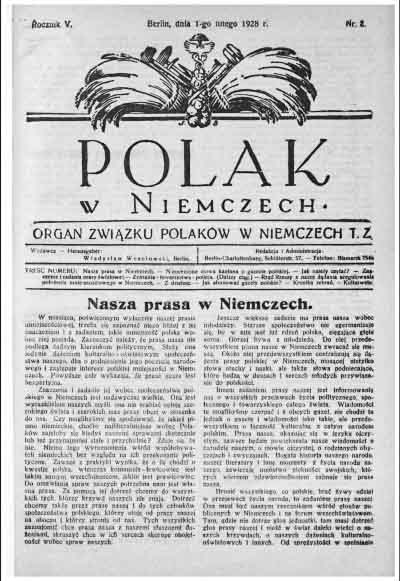
"A Pole in Germany", February 1, 1928 (Source: Porta Polonica)
The scope of interests raised by the newspaper (based on issue #5 from 1925) was comprehensive, which is reflected in such titles as: Jan Kasprowicz: "Blessed" (poem), "Minority", "Election of the Reich President", "About the Polish school system in the Opole Silesia", "The Act on the Cultural Autonomy of National Minorities in Estonia", or "Political Chronicle".
The magazine was published monthly and was distributed free of charge among the members of the Union of Poles in Germany. It can be said that "A Pole in Germany" was an ephemeral newspaper, published from 1925 with many interruptions due to financial difficulties. The first issues appeared monthly, then every year, and in 1972 the newspaper ceased to appear at all.
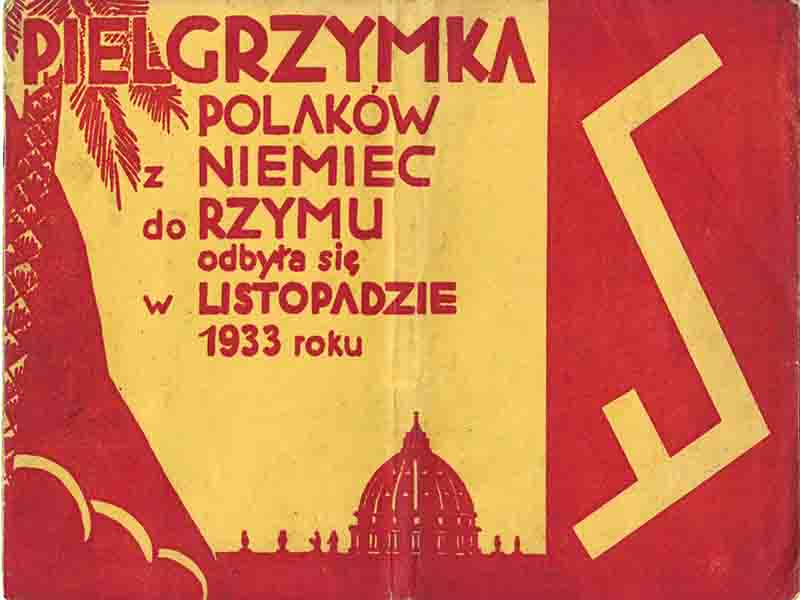
„A Pole in Germany” — The Pilgrimage to Rome, 1933 (Source: Porta Polonica)
The main purpose of the journal, apart from documenting the work of the association, was to preserve and deepen the Polish culture, language and national consciousness of Poles living in Germany. The magazine also informed about important political events in the reborn Polish state and in Germany, about the religious life of Poles in Germany, and about the cooperation of the Union with the Polish clergy. In 1934, a special issue of "A Pole in Germany" was published, documenting the pilgrimage of Poles from Germany to Rome in October 1933 on its 28 pages. (2)
After WWII
During the war, the magazine was closed and re-appeared in 1952 after a 13-year break. Here are a few words from the first post-war issue that illustrate the nature and ambitious goal of the journal: “After a long break, we re-publish the organ of our association (...). The monthly will document our faith, our thoughts, feelings and actions. It will proclaim, both internally and externally, our faithful attachments to the principles of the Church, nation, and humanity." (3)
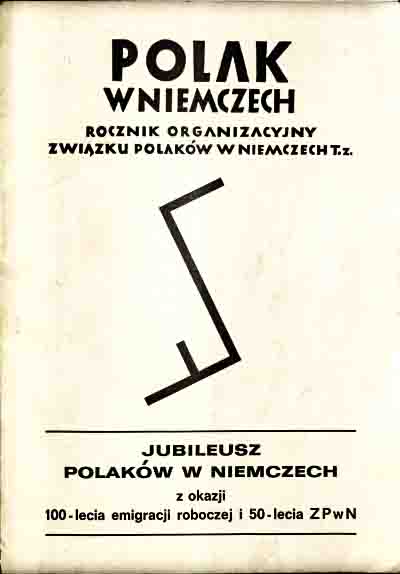
„A Pole in Germany”— 50-th anniversary of ZPwN and the Polish immigration centennial (Source: Silesian Digital Library)
In the 1950s, the Union of Poles in Germany faced financial difficulties again. In 1953 the publishing of the press body was stopped again, this time for eight years. In 1962, a special issue was published on the occasion of the 40th anniversary of the Union of Poles in Germany, and in 1963, two issues were published, in which the Union published the Council's decision that the press body was to continue to be published sporadically. The last issue of the magazine, in 1972, was an extensive special edition on the occasion of the 50th anniversary of the Union of Poles in Germany and the 100th anniversary of the emigration of Polish workers.
After the publication in 1972, there was a long hiatus that lasted until 2018.
For the Children and the Youth
The pre-war edition of "A Pole in Germany" was augmented with two magazines for the young and the youngest generation of Poles living in Germany: "A Young Pole in Germany" (Młody Polak w Niemczech) and "A Little Pole in Germany" (Mały Polak w Niemczech), which were supplements to the official press body of the Union of Poles in Germany.
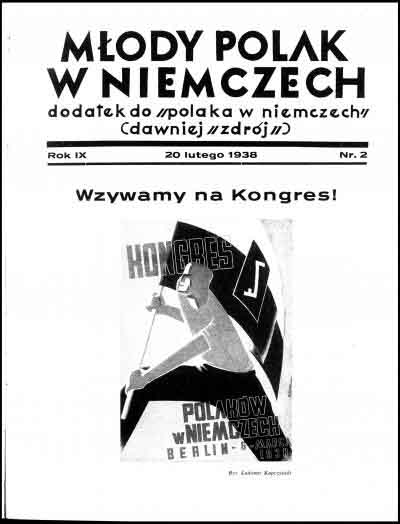
"A Young Pole in Germany” — We invite you to the Congress (Source: Silesian Digital Library)
"A Young Pole in Germany" was published on April 1, 1930. It was aimed primarily at Polish youth living in Germany. The editors were Helena Lehr and Edmund Osmańczyk (from 1935 the head of the press center of the Union of Poles in Germany). The place of publication was Berlin, Herne and Opole.
In the first issue of "Młody Polak" (April 1, 1930), the tasks and goals of this youth magazine were defined as follows:
Our goal is to unite Polish youth in Germany. (...) We want and we will create a full-fledged Pole. We will awaken and strengthen young people's love and a sense of indestructible attachment to the great Polish nation — we want to give young people full understanding of the task to be fulfilled in the German state. On the other hand, we want to educate a young Pole who is valuable in every respect by providing general educational information. In Silesia and in Westphalia, in Berlin, in the borderlands and in East Prussia, Polish youth should have only one thought: We are starting great creative work. (4)
The last issue was published on the day of the outbreak of World War II.
„Mały Polak”
"Mały Polak" (eng. A Little Pole) was published from August 1, 1925 to 1939, also as a supplement to the ZPwN main publication and was a monthly magazine addressed to children aged 7-14. It had a very extensive department for correspondence with young readers. "Uncle Franek" spoke to the children and members of the editorial office of the newspaper, including Józef Kwietniewski, Władysław Wesołowski and Jan Boenigek, played the role. Comments from the "A Friend for the Children" section presented the problems of the youngest inhabitants of Powiśle in Warsaw.
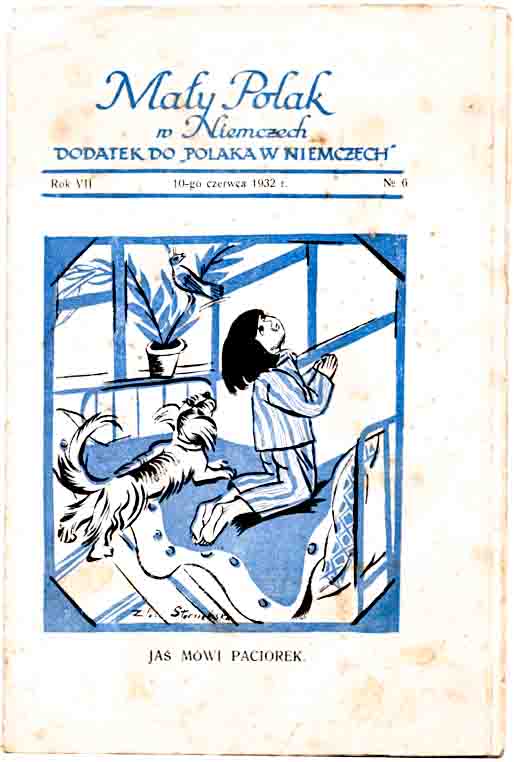
„Mały Polak” — „Little John Says a Prayer” (Source: Silesian Digital Library)
The goal of "Mały Polak" was becoming worthy of "being called a Pole." Uncle Franek asks, for example: "(...) where should a child get tips from, apart from being brought up by his parents, how should he behave in order to be worthy of being called a Pole?" And he issues a — still valid — statement "To the young!" (I quote in full):
If you know the language of love, do not hide it in the depths of your heart; say words to the young like flowers to soothe their troubles. Hatred, anger and betrayal lurk everywhere; only a voice from the heart can rule the heart of young people.
This magazine for children, like all other Polish-language magazines in Germany, was silenced on September 1, 1939.
The East Germany
After the war, there were no Polish organizations and publishing houses in the GDR, there was no Polish press, and people with Polish roots were subject to forced assimilation. The places of popularization of Polish culture were the centers of Polish information and culture in East Berlin and Leipzig. It was only in the 1980s and 1990s that the consolidation of Polish media institutions and the dialogue of the Polish diaspora with national and German institutions began.
Modern Times
The first, since 1972, issue of the new version of the monthly "A Pole in Germany" is a continuation of the periodical published by the Union of Poles in Germany in 1925-1939 and was presented on March 24, 2018 at the Embassy of the Republic of Poland in Berlin during the meeting of the Polish Consultative Council with the Polish Ambassador to Germany, prof. Andrzej Przyłębski.
The union announced: "We are pleased to announce that the first issue of «A Pole in Germany» magazine, published by the Union of Poles in Germany, has been released." (5)
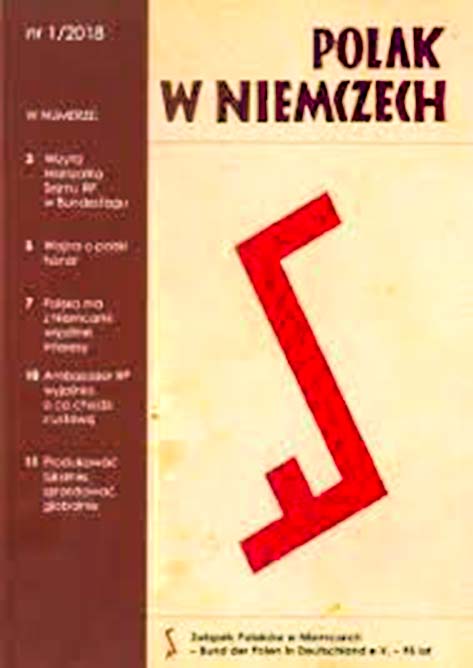
The first issue of "Polak w Niemczech", March 2018 (Source: Porta Polonica)
This Berlin meeting was attended by leaders, representatives of Polish organizations and communities,, including: vice-president of the Union of Poles in Germany, Anna Wawrzyszko, consul general Marcin Jakubowski, ambassador of the Third Republic of Poland, and embassy employees.
The contemporary magazine informs about important events in the field of Polish historical policy and the life of Poles in Poland and Germany. It was reborn thanks to the involvement of the Association's leading activists: Anna Wawrzyszko and Józef Malinowski. The editor-in-chief is Anna Wawrzyszko, who is also the vice-president of ZpwN. The paper is edited by a team consisting of the following people: Wojciech Kusy (until 2020), Barbara Krajewska, Anna Mansfeld–Ślaska, Bożena Wisłocka, Patryk Nowak and Danuta Niklewicz. The editorial office is temporarily located in Berlin and, after the renovation of the Polish House is completed, it will be in Bochum.
The spectrum of interests of the contemporary "A Pole in Germany" is very wide.
Number 9 in the year 2020 includes, for example, such titles that illustrate the versatility and relevance of the magazine: "Between the Vistula and the Seine" by Wojciech Kus, "War for abortion" by Zbigniew Kopczyński, "Awakened" by Maria Śmigelska and Barbara Krajewska, "Z życia Polonii" "By Anna Mansfeld-Slaska. There is also information about the opening of an exhibition devoted to President Lech Kaczyński in Berlin. The exhibition was entitled: "Professor Lech Kaczyński, President of the Republic of Poland. Politician. Social activist. Academic Teacher". The opening ceremony was performed on September 10, 2020 by the Ambassador of the Third Republic of Poland together with the Hungarian Ambassador Imre Györkös and the Georgian Ambassador, Prof. Levan Izoria (Hungary and Georgia! - that says a lot!)
Moreover, in the newly published issue of "A Pole in Germany" you can find many other proofs that the magazine "keeps its finger on the pulse of Polish life" in Poland, for example: "The 30th anniversary of Visegrad cooperation" or "On the Borderlands are beating feathers". The newly issued "A Pole in Germany" presents the heroic figures of our nation's sons, for example: "A photo of Captain Pilecki on a Warsaw-Berlin train locomotive" or "Generations of freedom - Families who gave their lives for Poland in the years 1920-1940-1980". You can also learn about the culture of our nation in: "Sierakowscy of the Ogończyk coat of arms, patriots against all odds".
Recently (before the elections for the Chancellor of Germany), the newspaper also published a statement by the candidate for Chancellor Armin Laschet about Poland: "I would like Polish-German relations to intensify." Before the election for the chancellor, it is good to have Poles on your side, but it did not help him in choosing this office — not due to the fault of the Poles, though.
Translation from Polish by Andrew Woźniewicz.



 auf Deutch
auf Deutch
